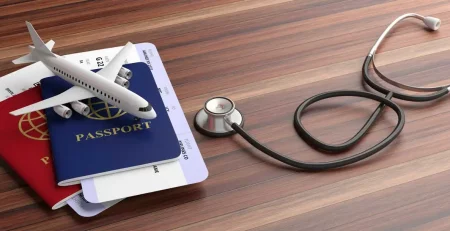Can PTSD Cause Seizures?
The Lesser-known Physical Symptoms of Post-traumatic Stress Disorder (PTSD)
Can PTSD cause seizures? If you or a loved one has post-traumatic stress disorder, you have probably seen myriad symptoms appear. You’ve witnessed panic attacks, flashbacks, anxiety, and emotional turmoil. But now you wonder if PTSD symptoms can also include seizure disorders.
Icarus Behavioral Health, one of the most well-regarded treatment options in Albuquerque, New Mexico, has extensive experience in treating psychiatric disorders including post-traumatic stress disorder (PTSD). Our mental health professionals facilitate healing by discovering the underlying psychological factors or traumatic events and then dismantling them.
Please read on to learn about PTSD-related seizures and how we can help ease the pain of past trauma and distressing memories.
Epileptic Seizures vs Non-epileptic Seizures Caused by Trauma

Not all seizures are the same. Some come from abnormal electrical activity in the brain and others come from severe psychological distress.
Epileptic Seizures (Caused by Electrical Activity Irregularities)
Abnormal electrical activity in the temporal lobe (controls memory and emotions) and frontal lobe (controls movement) of the brain. During an epileptic seizure, the neurons housed in those regions send abnormal signals that disrupt brain function.
Epileptic seizures usually come from traumatic brain injury, neurological disorders, or a genetic predisposition. During an epileptic seizure, an EEG test will register the irregular brain waves to confirm the diagnosis.
Focal Seizures (Partial Seizures)
Partial seizure symptoms, called focal seizures can cause muscle twitching, unusual sensory experiences, or unconsciousness. They can originate from a few areas of the brain. An EEG reading can pinpoint the origination of the focal seizures.
People may experience epileptic seizures and focal seizures similarly. While they are not linked to trauma, and not directly linked to neurogenic tremors, understanding them helps you have a more complete picture of seizure types.
Psychogenic Non-Epileptic Seizures (Caused by a Traumatic Event)
Psychogenic non-epileptic seizures (also called dissociative seizures) are a type of conversion disorder. In the case of PNES seizures, they originate in the brain regions responsible for managing emotions, the amygdala and prefrontal cortex. Understanding the functions of those brain areas is important for discussing psychogenic seizures.
The amygdala processes both fear and emotional memories; the prefrontal cortex regulates how we react to emotional triggers. Those experiencing non-epileptic seizures are having a reaction to psychological factors by seizure-like episodes.
Unlike epileptic seizures, an EEG test cannot measure psychogenic nonepileptic seizures. So while they resemble epileptic seizures, they are not the same thing.
What to Do if Someone Has Seizure Symptoms: 5 Steps to Take

If someone is having a seizure, especially for the first time, you should help them quickly.
1) Stay Calm and Time the Seizure
Set the stopwatch on your phone to monitor the length of the seizure. If you reach the 5-minute mark, it’s time to call 911. It is moving from a minor seizure to a medical emergency.
2) Protect the Person From Injury
Ironically, a traumatic brain injury can cause an epileptic seizure; however, you must also protect the person from any injuries.
Remove any hard or sharp objects from the immediate area. Cushion their head with a cushion or folded-up sweatshirt.
3) Don’t Restrain Them or Insert Anything
There’s much misinformation in the movies and on social media about handling a seizure. Do not attempt to hold the person, which can lead to injury.
Likewise, do not put anything into their mouth. They are at a greater risk of choking or an airway blockage if you do.
4) Put the Person into the Recovery Position
After they stop seizing, put the person on their left side with their left arm outstretched for support and the right arm slightly bent. If possible and safe to do so, use a pillow to put their neck into a straight position to allow airflow.
This position improves blood flow throughout the circulatory system. It also reduces pressure on the stomach and lungs versus lying face down. The main reason, though, for this position, is that it reduces the risk they’ll choke if they vomit.
5) Stay With the Person Until Professional Help Arrives
Don’t leave the person; stay close. Offer them reassurance until they become fully aware of what just happened. Note any changes in their appearance, behavior, or breathing. Explain what you know to EMTs or other first responders when they arrive at the scene.
Get Our Free Mental Health Assessment
Pedro Had Seizures After an Accident: Traumatic or Epileptic Seizures?
Our past client ‘Pedro’ arrived at Icarus when doctors could not understand why he was having seizures after a motorcycle accident. He amazingly escaped the mishap without anything more than superficial scrapes and did not hit his head.
The driver of the car that hit him was not so lucky – the collision propelled the vehicle into a nearby tree. Pedro watched and listened as the EMTs who had arrived speculated whether surgeons would save the woman’s arm.
A few weeks later after the crash, Pedro started to have convulsions. His family doctor said they were seizures and sent him to a neurologist. The neurologist found no evidence of damage in the brain that would cause this to happen and suggested the cause was psychological distress.
Pedro mistakenly heard only “nothing was wrong,” and ignored the problem. They grew in severity, frequency, and length. One evening, he had a particularly bad seizure, and his girlfriend called 911. A physician in the E.D. recommended Icarus to help him resolve the trauma.
At Icarus New Mexico, Pedro learned that his accident – both reliving the impact and witnessing the severe injuries of the other driver – had been too much for his brain to process. The overload had caused his brain to have so much stress that it caused seizures. He’d also been sleepless for weeks and had not connected the sleep loss with the seizures and PTSD.
Pedro spent time in therapy acknowledging and coping with his trauma. The doctor prescribed medicine to help stop the convulsions in the first days of therapy, giving him relief as he mastered the techniques. He really enjoyed the healthy meals at Icarus; he felt so much better physically as well as mentally.
The therapy took several weeks but was very successful. Pedro is doing great now. He’s even worked up the nerve to get back on his motorcycle and rides even more safely and cautiously these days.
How Common is Posttraumatic Stress Disorder?

According to statistics from the National Center for PTSD, about 3.6% of the population, or 12 million American adults, have PTSD or other trauma-related symptoms. Annual numbers reported can vary based on how many people suffer in silence and how many seek professional treatment options.
As we continue to remove the stigma of seeking professional help for mental disorders, these numbers will stabilize.
The highest rates of PTSD occur in military service members, first responders, and survivors of sexual violence. If you have post-traumatic stress disorder or PTSD-related seizures, know that you are not alone. This is by no means a rare psychiatric condition.
What Are the Key Causes of PTSD?
People can develop PTSD and related mental health problems after witnessing or directly experiencing a single traumatic event or a series of repeated traumas.
When the brain’s response system has difficulty processing a traumatic event, it becomes ineffective at managing emotions and rational thoughts. The psychological stress in the brain makes it process the memories of the trauma inappropriately.
A Sample List of Events That Can Trigger PTSD Reactions
Here is a partial list of some common things that can cause PTSD:
- Physical abuse
- Sexual abuse over a long time or a single-instance sexual assault
- Emotional or verbal abuse (especially repeatedly)
- An accident, especially one that causes a serious injury
- Diagnosis of a severe illness
- Death or loss of a loved one
- Natural disasters
- Famine or war
- Other traumatic events
Interestingly, there is also a phenomenon called “postepileptic seizure PTSD.” It refers to developing PTSD symptoms after having epileptic seizures as the trauma trigger.
The challenges of processing any trauma can simply be too much for the brain to handle; in response, it sends “panic signals,” or the PTSD symptoms that are so damaging to your mental health.
The Most Common PTSD Symptoms

You can have moderate to severe PTSD symptoms from one day to the next. The symptoms fluctuate (sometimes wildly), based on the day’s psychological stressors or exposure to something that reminds you of the traumatic event. That element of unwanted surprise makes daily life a challenge.
Here are the symptoms to know:
- Emotional numbness
- Flashbacks
- Nightmares
- Negative thought patterns
- Anxiety
- Fatigue
- Sleep disruptions
- Headaches
- Muscle tension
- Stomach issues
- Racing heart and high blood pressure
- Overly alert to danger
- Experiencing seizures
- Thoughts of self-harm or suicide
The medical professionals at Icarus can help you by providing the appropriate treatment options to help decrease the trauma response.
Get a Confidential Mental Health Assessment
Our Holistic Treatment Approach for Treating PTSD-Related Seizures
Healing dissociative seizures starts with an accurate diagnosis that a client does, indeed, have post-traumatic stress disorder.
After steps one and two, this process is not linear. The various techniques and therapies overlap and work together like a well-oiled machine.
Step One: Initial Medical History and Assessment
We start with reviewing your complete history and discuss any traumatic event, PTSD symptoms, and their duration. We will ask you to complete the PCL-5, a PTSD Self-reporting Checklist (sometimes called the PTSD scale). This checklist helps identify symptoms that must be present per the Diagnostic and Statistical Manual.
Step Two: Medical Tests to Distinguish Non-epileptic Seizures or Epileptic Seizures

We will ask for an EEG to monitor the brain’s electrical activity and rule out an epileptic event. We’ll also want to run an MRI to look for any structural differences. This physical examination of the brain will help the Icarus team confirm whether the cause of the seizures is epilepsy or not. No brain abnormalities present during the testing point us toward PTSD or dissociative disorders.
Step Three: Psychotherapy (CBT + EDMR)
Managing PTSD symptoms starts with comprehensive psychotherapy to reduce the impact of trauma.
Cognitive behavioral therapy (CBT) helps transform the negative thought patterns associated with trauma and dissociative disorders and challenges them. Throughout the cognitive behavioral therapy process, clients learn to manage the most distressing symptoms.
Eye Movement Desensitization and Reprocessing challenge clients to follow the therapist’s findings while recalling the event that triggered the PTSD. This therapy reduces the impact of the trauma by desensitizing the brain. The memories become less overwhelming feeling over a short time of therapy.
Step Four: Medication Management
When used in combination with psychotherapy, FDA-approved medications may help with managing PTSD and non-epileptic seizures.
SSRI inhibitors are commonly prescribed, as they help reduce depression and sadness that often accompany PTSD. In addition, anti-anxiety medications can be appropriate for short-term use and under close supervision of a doctor.
If someone is having frequent dissociative seizures, anti-convulsant prescription drugs can be another appropriate treatment.
Step Five: Holistic Approaches to Non-Epileptic Attack Disorder
Stress reduction techniques – think box breathing, yoga, or meditation – can be an excellent additional therapy. These techniques help calm the central nervous system, thus reducing the chances of additional dissociative seizures.
We also include nutritional counseling, understanding that a balanced diet can influence mental health.
Step Six: Lifestyle Changes and Ongoing Monitoring Post-Treatment

Overcoming PTSD through treatment and keeping the symptoms from reappearing often means making changes in your lifestyle. Some examples of better habits that can help you stay well include the following:
- Regular exercise: Put your smartwatch through the paces and put in at least 7,000 steps each day. A JAMA Network Open study in 2021 reported that a number of daily steps significantly reported mortality rates. Remember that the brain is an organ, which means it, too, benefits from exercise.
- Keep a daily routine: You’ll notice that Icarus Behavioral Health keeps a pretty strict schedule for our clients. That’s not just because we like to run a tight ship; it’s because keeping a schedule brings comfort and predictability to your day. Even after you leave your treatment program, you will need this structure. Develop a good routine that suits your work and family schedule and stick with it!
- Eat healthy foods: Your mental and physical well-being are intricately interconnected. When you feed your body good foods, you’re also feeding your brain healthily. Limit sugar, salt, and the overconsumption of salty snack foods and baked treats. Replace meat with fish twice weekly and load up on your veggies.
- Limit your caffeine intake: Even hours after consumption, caffeine can impact your ability to fall asleep. Being groggy or exhausted can cause mood swings and irritability. You’ve worked too hard to overcome these to go backward!
- Find your people: Connect with family or friends for extra support and to reduce any feelings of isolation. Don’t have many friends? Join a fitness class, a knitting club, or any other group activity that interests you.
Don’t be afraid to take charge of your mental well-being. It’s time you have a fresh start on your life, free of trauma!
Up To 100% of Rehab Costs Covered By Insurance
Call Icarus New Mexico for Help Resolving Trauma Today
If traumatic memories continually interfere with your life, it’s time for a change. Icarus Behavioral Health in New Mexico can provide you with a full continuum of care and evidence-based treatment techniques.
Call our admissions staff today; they’ll help you arrange for the professional treatment you need. All calls are confidential, so please reach out for proven support options with Icarus now!











